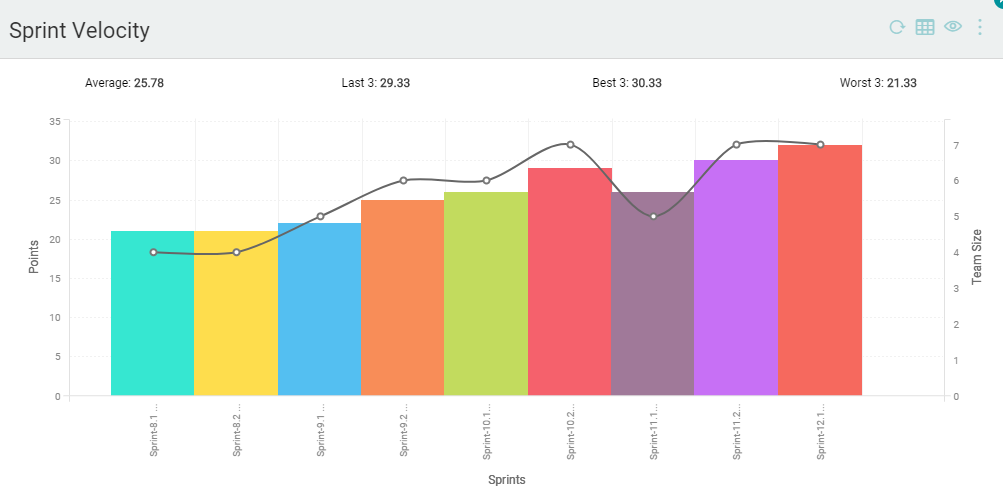Velocity in Agile

Agile 101
Agile Methodologies
Agile Practices
Agile Metrics
Agile Artifacts
Scaled Agile
What is Velocity in Agile?
Velocity in agile terms means the average amount of work a team can complete in one “delivery cycle” – typically a sprint or a release for Scrum teams or a time period such as a Week or a month for Kanban teams. (It is also referred to by many as the Throughput, especially by Kanban teams).
Sprint/ Release or Weekly velocity can be measured in the form of story points or effort spent and is used for estimation/ forecasting. A team can use this to determine how quickly it can work through its backlog – or how many sprints or weeks will it take.
For example, the backlog may have user stories worth 400 story points in the backlog. Based on past performance, if the team has demonstrated a sprint velocity of 40 story points, the team may need about 10 iterations to complete all the work in the backlog. If each iteration is two weeks, then the project will last 20 more weeks.
The Sprint or Release velocity is unique to each team and the last thing you want to do is to compare or equate two teams’ velocity. Each team is unique and so is their velocity. For example, if team A has demonstrated a sprint velocity of 40 story points over 4 sprints and team B has shown it to be 60 story points also over 4 sprints, that does not mean that team B has a higher yield. Each team has a unique estimation culture, as are their estimates and so their velocity can be different too.
Velocity or throughput is a good metric for agile teams and can be used effectively as a planning/ forecasting tool. A velocity distribution diagram can establish the trend for a team and help it determine what it can deliver in the future if it maintains the observed trend.
Check out Nimble Now!
Humanize Work. And be Nimble!






